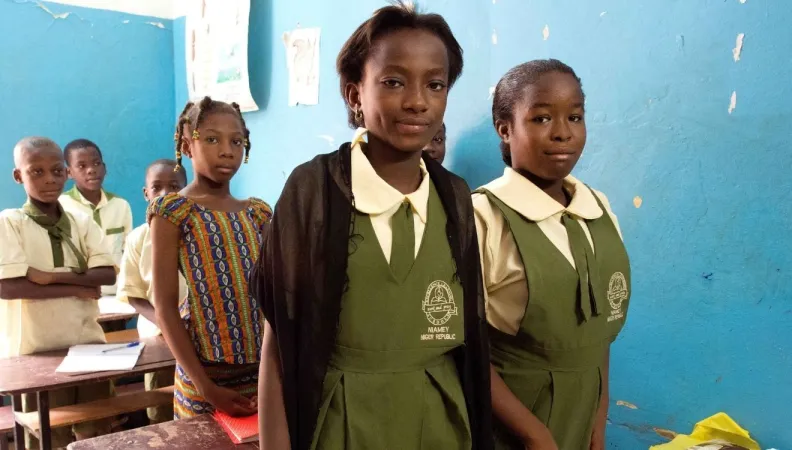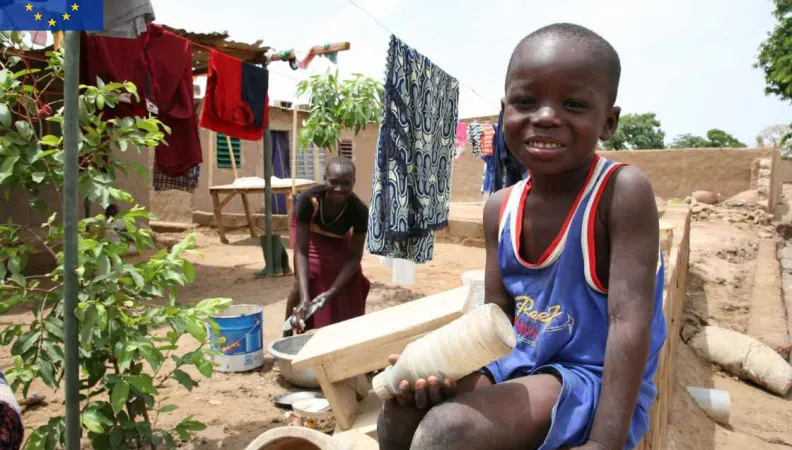 How do intersecting vulnerabilities affect the quality of young women and men inclusion in labour markets in Niger and their ability to move out of and remain out of poverty? How do different forms of livelihoods, education, training or migration affect youth inclusion? How do these models vary by gender, generation and area of residence? A study explores the depths of young adults’ labour inclusion in the regions of Tahoua and Zinder.
How do intersecting vulnerabilities affect the quality of young women and men inclusion in labour markets in Niger and their ability to move out of and remain out of poverty? How do different forms of livelihoods, education, training or migration affect youth inclusion? How do these models vary by gender, generation and area of residence? A study explores the depths of young adults’ labour inclusion in the regions of Tahoua and Zinder.
Context
Today’s Nigerien youth is perceived as being worse off than their parents in terms of labour stability and poverty dynamics. Despite the fact that the majority of young people work, these are often informal or precarious employment opportunities. As a consequence, young female and male workers reshape their adaptive strategies to escape poverty across factors such as migration spells, acquired education, possibilities of training and apprenticeships, as well as through the development of social networks, all which are further combined with changes and negotiations in gender and generational norms.
Goal
This project identifies the factors that limit and those that enhance young adults labour inclusion in the regions of Tahoua and Zinder in Niger, by focusing on gender-streamlined poverty trajectories of livelihoods, and the effect of different forms of training, education and migration experienced. The researchers explore what are the barriers to youth inclusion in these regions, inspecting how aspects like income insecurity and gender norms in and out of the labour market influence young adults engaging in various employment activities.
The main article thoroughly studies some dynamic factors that affect the Nigerien youth inclusion in labour markets, via a gendered analysis of poverty dynamics. It inspects areas like the quality of education, typologies of livelihoods, and changes experienced by the youth in relation to gender and generational norms. Specifically, by conducting separate analyses across gender, generations and area of residence, the project aims to answer the following questions:
- How intersecting macro, meso and micro vulnerabilities affect the quality of youth inclusion in labour markets and their adaptive ability and their capacity to remain out of poverty over time.
- How do different forms of local training (formal school, Quranic education, NGO-based and other training) affect youth inclusion?
- How does migration affect the integration of young people into the world of work in ways that are conducive to (sustained) poverty escapes?
Method
The project adopts a mixed methods research design, combining a quantitative analysis with qualitative methodologies from the Laboratoire d'Etudes et de Recherche sur les Dynamiques Sociales et le Développement Local (LASDEL) and from the Chronic Poverty Advisory Network (CPAN) at the Oversease Development Institute (ODI). The combination of the two qualitative approaches is explained in detail in a methodological paper. The fieldworks took place in peri-urban and rural Zinder and Tahoua regions as well as Niamey in 2020. Two rounds of field surveys involved focus group discussions, life history interviews and Key Informant interviews (KIs), which were used to analyse the evolution of youth inclusion in these regions of Niger. Moreover, a final round of KIs was completed between December 2020 and January 2021 to deepen the understanding of the project main results. The quantitative method used relies on regression analysis based on a nationally representative longitudinal survey in rural and urban areas of Niger that took place in 2011 and 2014.
Results
Two restitution events took place on:
- June 14, 2021 in English.The event was facilitated by the ODI-CPAN team with presentations by Andrew Shepherd, Lucia Da Corta, Vidya Diwakar and Cecilia Poggi.
- June 21, 2021 in French-Hausa. The event was facilitated by the LASDEL research team with presentations by Aïssa Diarra (Socio-anthropologist LASDEL) and Tahirou Ali Bako (researcher LASDEL).
Lessons learned
Read our research publications:
Contacts:
- Aïssa Diarra, Socio-anthropologist and Project Co-coordinator, LASDEL Niger
- Andrew Shepherd, CPAN Director and Project Co-coordinator, ODI
- Cecilia Poggi, Research Officer, AFD
 Legal notice EU (project) Burkina Faso has enjoyed relatively strong economic growth throughout the past ten years (more than 5% per year on average). Nevertheless, a non-negligible portion of the country’s population lives below the poverty line (40% in 2014). Thorough analysis is needed to better understand the many challenges posed by this level of inequality.
Legal notice EU (project) Burkina Faso has enjoyed relatively strong economic growth throughout the past ten years (more than 5% per year on average). Nevertheless, a non-negligible portion of the country’s population lives below the poverty line (40% in 2014). Thorough analysis is needed to better understand the many challenges posed by this level of inequality.
Context
Between 2007 and 2013, the average annual growth rate of Burkina Faso’s gross domestic product (GDP) was approximately 7% per year in real terms, representing one of the best economic performances in West Africa. If we take into account the country’s strong population growth, the average rate of per-capita GDP rose by 3% per year during this same period. Meanwhile, the poverty rate grew from 45% in 1994 to 47% in 2009. Despite signs of a decline (40% in 2014), considerable inequalities remain.
This project is part of the first phase of the Research Facility on Inequalities, coordinated by AFD and funded by the European Commission's Directorate-General for International Partnerships over the 2017-2020 period. The first phase of the Facility has led to the conduct of 22 research projects and the publication of around 100 research papers and policy briefs.
Goal
The initial objective of this research program on inequalities in Burkina Faso is to create an inequality diagnostic in the country. In a second phase, scientific studies will be carried out on three themes:
- The dynamics of inequalities and of multidimensional poverty;
- Educational trajectories; and
- What happens to graduates of the educational system.
The objective here is to examine how school graduates become integrated into society later, and to what degree they put into practice the skills acquired at school.
The research will mainly concern the cities of Ouagadougou and Nouna, in western Burkina Faso.
Method
The diagnostic on inequalities will take stock of the situation in Burkina Faso through a literature review and analysis of data from national surveys. The dynamics of inequalities and of multidimensional poverty in Burkina Faso will be understood through the experiences of one of the partners of this project, the Ouagadougou and Nouna Observatories. Analysis of trends in inequalities and in multidimensional poverty over time will be carried out in urban, semi-urban, and rural areas, according to the demographic, social, and economic characteristics of households and to the degrees of poverty. Research on the educational trajectories and on what has become of people having graduated from the educational system will use the same data. The idea is to monitor cohorts of school graduates to study their trajectories and their integration into the society in the longer term.
Results
This research will give rise to conferences and workshops. Various publications are also planned: a report, policy briefs, and research articles.
You may find the research papers here (in French) :
- Etat des lieux des inégalités multi-dimensionnelles au Burkina Faso
- Les inégalités au Burkina Faso à l'aune de la pandémie de la Covid-19: quelques réfléxions prospectives
- Dynamique des inégalités et de la pauvreté multi-dimensionnelle à Nouna
- Dynamique des inégalités de la pauvreté multi-dimensionnelle à Ouagadougou : données de l'Observatoire de population de Ouagadougou
You may also find the policy briefs:
- Meeting the equity challenge in Burkina Faso: regional policies to reduce economic inequalities
- Improving access to education in Burkina Faso: a major condition for benefiting from the demographic dividend
And the policy dialogue: Improving access to education in Burkina Faso: A major condition for benefiting from the demographic dividend
Contacts:
- Linda Zanfini, Research Officer, AFD
- Rohen d'Aiglepierre, Research Officer, AFD
